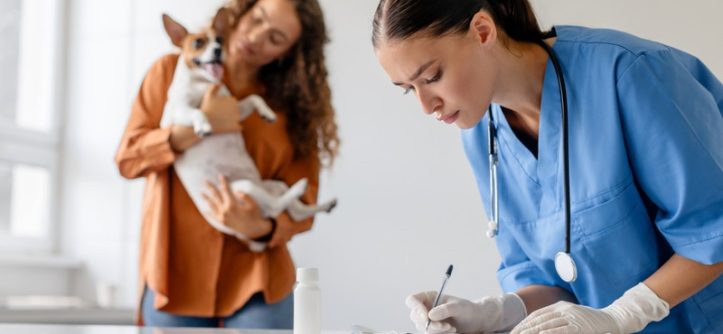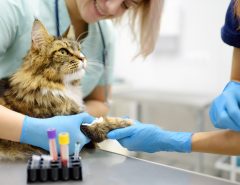As a responsible pet owner, you always want to ensure your furry friend is healthy and happy. But sometimes, even the most vigilant of us might miss the subtleties that indicate a trip to the vet is necessary. Recognizing the urgency of certain symptoms can be the difference between a minor issue and a life-threatening situation. In this guide, we’ll discuss those red flags that signal it’s time to seek immediate veterinary attention.
Unusual Behavior or Extreme Changes in Activity
When your pet exhibits behavior that is out of character, it may be a signal something is wrong. Be on the lookout for sudden aggression, withdrawal, or a dramatic increase or decrease in activity. If your usually playful pup is suddenly lethargic or your active cat is hiding away, these could be signs of distress or illness that warrant a vet visit.
This may also require some vaccinations to avoid any future problems. For more details, a visit to the vet can provide you with the required information to safeguard your pet’s health.
Vomiting or Diarrhea
-
Persistent vomiting, especially if it’s accompanied by a reluctance to eat or if there is blood present, is a sign that something serious could be occurring internally.
-
Repeated bouts of diarrhea can quickly lead to dehydration, particularly in small pets or young animals, and require prompt medical intervention.
Difficulty Breathing
Respiratory problems are often serious and can deteriorate rapidly. Signs to watch for include exaggerated or labored breathing, continuous coughing, and any strange sounds when your pet breathes. If you notice these symptoms, immediate veterinary care is crucial.
Changes in Appetite or Drinking Habits
Sudden loss of appetite or an abrupt increase in thirst could be symptomatic of a range of issues, including diabetes or kidney disease. Consistent monitoring of your pet’s eating and drinking patterns is essential to catch these changes early.
Evidence of Pain
If your pet is visibly in pain, shown by a reluctance to be touched, whimpering, howling, or limping, you should consider this an emergency. Pain can be indicative of injuries, infections, or conditions that are not immediately apparent.
Problems with Eyes or Vision
-
Eye issues can escalate quickly and potentially lead to blindness. Cloudiness, redness, frequent blinking, or discharge are all reasons to get your pet evaluated.
-
If you notice your pet bumping into things, having trouble finding their food bowl, or showing reluctance to go into dark spaces, an immediate vet check for vision issues is advisable.
Seizures or Uncontrollable Trembling
Witnessing your pet having a seizure is an alarming experience. Seizures can be caused by neurological issues, toxins, or underlying medical conditions. Uncontrollable shaking or trembling should also be taken seriously and calls for veterinary examination.
Bad Breath or Dental Issues
While bad breath may seem innocuous, it could be a sign of periodontal disease or gastrointestinal issues. If you notice a sudden foul odor or your pet is reluctant to chew, reconsider its triviality:
It could warrant a visit to a professional veterinary dentist in Gallup, NM and potentially prevent more serious oral health problems.
Excessive or Unusual Discharge
Discovering strange discharge from your pet is a clear signal that something might be wrong. Pets can get discharges from their nose, eyes, ears, or back end, and these can vary in color, thickness, and smell. This could be a clear liquid or something thicker like pus, which often suggests an infection.
Types of Discharges and Potential Causes
-
Nasal Discharge: A bit of clear fluid from the nose might not be a worry, especially if your pet is otherwise acting normal. But if you see a lot of mucus, or it’s colored or mixed with blood, this could mean there’s a problem that needs immediate attention.
-
Eye Discharge: Eyes can get runny or gooey for many reasons. While some small eye “boogers” are typical, a sudden increase or change could indicate an infection or something stuck in the eye.
-
Ear Discharge: Ears should generally be clean and free of heavy wax or fluid. Any smelly discharge or excess wax might be caused by an ear infection or even ear mites, especially if your pet is scratching their ears a lot or shaking their head.
-
Rectal Discharge: Seeing blood or pus when your pet goes to the bathroom can be alarming. This might mean there’s a problem inside, like an infection, worms, or something more serious, and needs a quick check-up.
Whatever type of discharge your pet has, it’s important not to ignore it. If you see anything unusual, it’s worth making an appointment with the vet. They can look closely at the problem and run tests if needed to find out what’s causing the discharge and how to treat it. Your pet relies on you to notice when something is off and to seek help. Keeping an eye on any new or strange discharge can be a key part of keeping them in good health.
Apparent Trauma or Injury
If your pet has been involved in an accident, even if they seem fine, hidden injuries can be life-threatening. Signs of pain, limping, or an unwillingness to be touched should prompt you to seek a veterinary surgeon in Gallup, NM, for a more detailed assessment.
To End
Regular check-ups and preventive care are paramount, and keeping up with your pet’s vaccination and parasite prevention is a necessity for their well-being. Being attentive to the signs and taking swift action can make all the difference in ensuring the longevity and happiness of your beloved companion.




